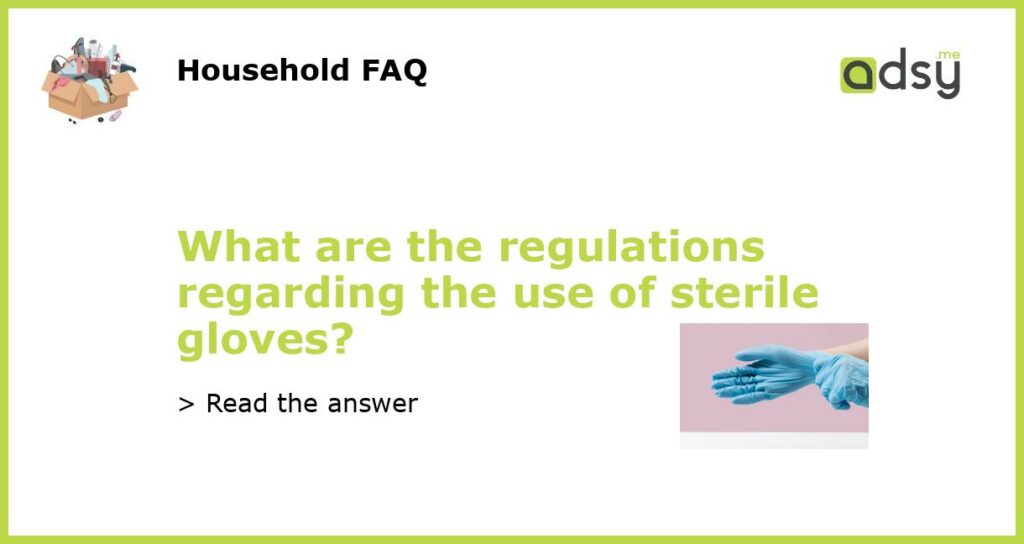Infection control measures require the use of sterile gloves
Sterile gloves are an essential component of infection control measures in healthcare settings. They form a protective barrier between the healthcare provider and the patient, preventing the transmission of microorganisms. The use of sterile gloves is regulated by various organizations and guidelines to ensure that healthcare facilities maintain a safe and sterile environment.
Regulatory bodies and guidelines for sterile glove use
Several regulatory bodies and organizations have established guidelines for the use of sterile gloves in healthcare settings. One such organization is the Centers for Disease Control and Prevention (CDC), which provides recommendations on infection prevention and control practices. The CDC’s guidelines emphasize the importance of using sterile gloves when performing invasive procedures or when there is a risk of contact with sterile body sites or fluids.
Another regulatory body is the Food and Drug Administration (FDA), which regulates the manufacturing, labeling, and distribution of medical devices, including gloves. The FDA has specific requirements for companies that produce sterile gloves to ensure their safety and effectiveness. These requirements include adherence to good manufacturing practices, labeling requirements, and post-marketing surveillance.
Types of sterile gloves and their uses
There are several types of sterile gloves available, each designed for specific healthcare procedures or situations. Some commonly used types of sterile gloves include surgical gloves, exam gloves, and chemotherapy gloves.
Surgical gloves are specifically designed for use in surgical procedures and provide a high level of protection against bloodborne pathogens and other infectious agents. These gloves are usually made from latex or synthetic materials and undergo a rigorous sterilization process to ensure their safety.
Exam gloves, on the other hand, are used in non-surgical settings, such as clinics, hospitals, and other healthcare facilities. These gloves are typically made from latex, nitrile, or vinyl and provide a barrier to protect against the transmission of microorganisms.
Chemotherapy gloves are a special type of glove used by healthcare providers when handling chemotherapy drugs. These gloves are designed to protect against the hazardous chemicals used in chemotherapy and are usually made from a thicker material, such as nitrile or neoprene.
Proper use and disposal of sterile gloves
Proper use and disposal of sterile gloves are critical to maintaining a sterile environment and preventing the transmission of infections. Healthcare providers should always follow the recommended procedures for donning and doffing gloves to ensure their effectiveness.
Before donning gloves, healthcare providers should ensure their hands are clean and dry. They should also inspect the gloves for any signs of damage, such as tears or holes, as this can compromise their integrity. Once the gloves are worn, they should be used for the intended procedure only and should not be reused or washed and disinfected for reuse. Used gloves should be discarded in an appropriate waste container.
It is important to note that not all gloves are created equal when it comes to their ability to provide a sterile barrier. Healthcare providers should carefully select gloves that meet the necessary standards and regulations to ensure their effectiveness in preventing the transmission of infections.
The use of sterile gloves is regulated by various organizations and guidelines to ensure that healthcare facilities maintain a safe and sterile environment. Regulatory bodies such as the CDC and FDA provide guidelines and requirements for the use and manufacturing of sterile gloves. There are different types of sterile gloves available for specific healthcare procedures, and healthcare providers should carefully select gloves that meet the necessary standards. Proper use and disposal of sterile gloves are crucial to maintaining a sterile environment and preventing the transmission of infections.






